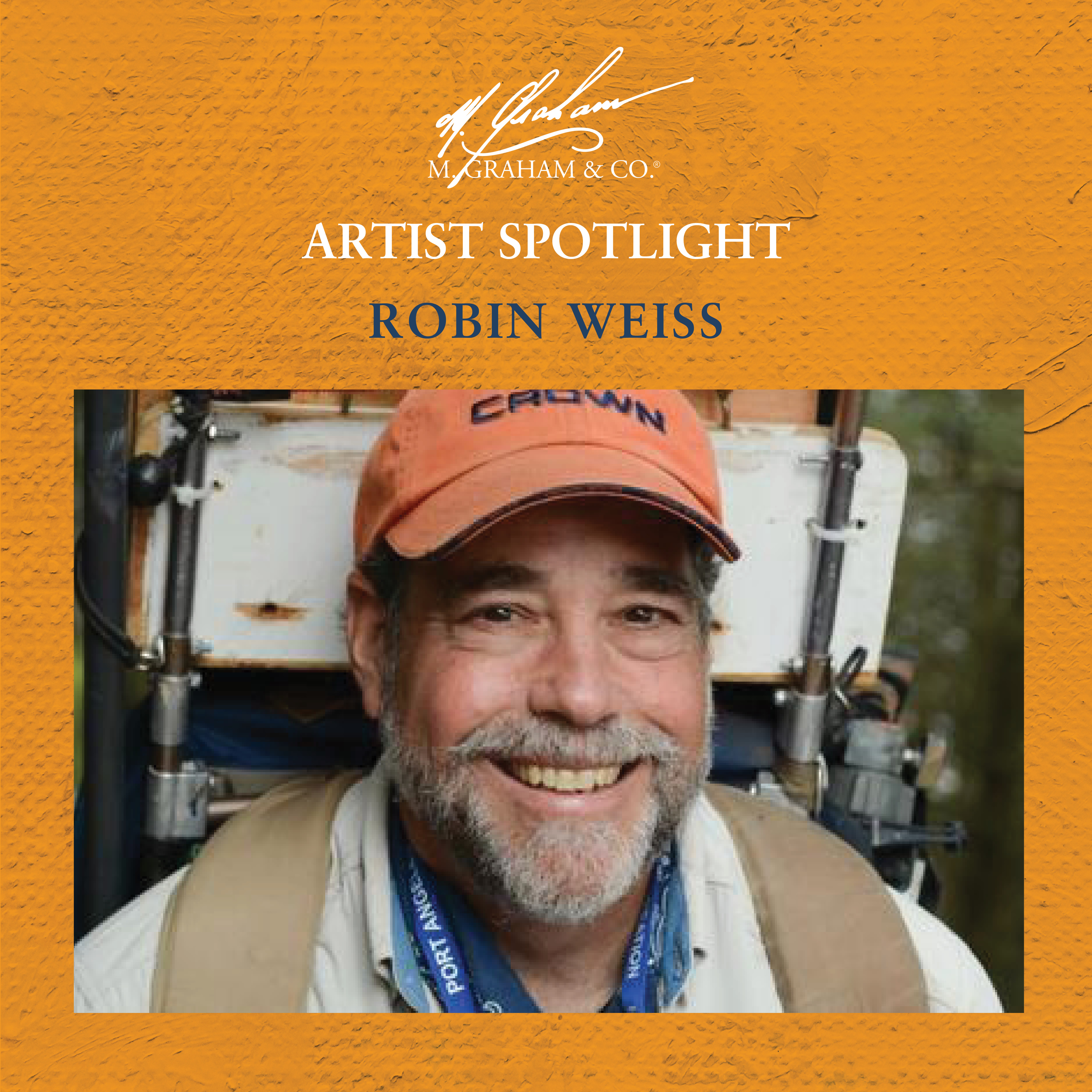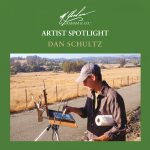
Artist Spotlight: Robin Weiss
Award-winning plein air painter Robin Weiss shares his love for M. Graham oils, how the the Pacific Northwest has shaped his palette and his strategy for not getting overwhelmed by details while painting alla prima in his interview for the latest M. Graham blog.
You tell us that you started drawing at a young age, picking up painting at a later time. Which artists, or experiences, have majorly influenced your artistic style?
After I entered high school, art class had a big influence on me. In fact, it was one of the few classes that really held my attention, mainly due to my instructor, Lou Penfield. He saw some potential in me as an artist and began to teach me watercolor painting. That grew into a life-long friendship, and I give Lou a lot of credit for where I am today. After entering community college, Jane Wallace and Deanne Lemley further encouraged and strengthened the quality of my watercolor painting. The work of other artists that have had a great impact on how I paint in oils are Richard Schmid, John Singer Sargent and Joaquin Sorolla
In your earlier work, you painted in watercolors, even while in the Navy. For the past decade, you have painted primarily in oils. What do you enjoy the most about painting in oil compared to watercolor?
Because I paint outside from life a lot more now, oil paint gives me the versatility to paint wet-in-wet for longer periods of time. They also hold up better outside in adverse conditions such as rain or snow. I also just enjoy the buttery texture and juicy color of oil paint!
What makes M. Graham oil paint stand out from other oil paints brands you have tried?
The use of walnut oil in the M. Graham oil paint makes the consistency a bit looser, which I have gotten to really like for alla prima painting. Starting off in watercolor gave me a love for wet-in-wet application of paint. The slower drying time and the workable viscosity of M. Graham oil paint helps me achieve the results I am looking for. If I need to speed the drying time, I will mix in some of the Fast-Dry Titanium White. I also push color in my work and the color intensity of M. Graham oil paint delivers that for me.
How has living in the Pacific Northwest shaped your color palette?
You really need to know how to mix a variety of green colors in the Pacific Northwest! Here, we have an abundance of Blue and Green and those colors seem to dominate. I have to actively seek other colors in the landscape to achieve color balance and harmony in my work. Although this makes building my color palette challenging, I wouldn’t want to live anywhere else!
Which four M. Graham oil colors will we always find on your palette?
I almost always begin my paintings with a reddish/orange hue to complement the predominant greens and blues of our landscape. So, you will always find Transparent Orange Oxide or, my new favorite, Quinacridone Rust. I also include Ultramarine Blue, Viridian and Hansa Yellow.
We can see you enjoy painting urban scenes, still life and natural landscapes. Which are your favorite subjects to paint and why?
I have to say that I enjoy painting all these scenes equally and changing subjects helps me to stay inspired and motivated. But saying that, I love traveling to different locations and painting outside from life, so my first love is landscape painting.
Painting en plein air is challenging, for the scene in front of you is constantly changing. Even more so, because you paint alla prema (painting a whole scene in one sitting). What is your strategy for not getting overwhelmed by changing details?
You can paint a life time and still be overwhelmed by details and just the majesty of nature, but there are tricks to help. Like many artists I will often do a thumb nail sketch or use a viewer to help compose and simplify. You may see a T-shirt or bumper sticker in the art community claiming “Sargent says squint!” That’s good advice! I like to tell my students to eliminate half the detail you see right off the bat when sketching a design in the field. Of course, having lots of miles on your brush teaches you how to simplify details.
As an oil painter who both works and teaches, what is a common mistake you see students making with oil painting and how do you teach them out of it?
One for sure is that students will not put enough paint on their palette. I often tell them “You can’t paint without paint!” Also, a careful observation of the scene before paint you is very important. It’s easy to get excited about a beautiful scene in nature, then hurry to get started, before you carefully observe the relationship of shapes and color. The quick thumbnail sketch technique is helpful to avoid getting overwhelmed by details, especially for beginners.
Do you have any advice for people who aspire to paint for a living?
Follow my motto, which is to never give up! My other piece of advice, go to a Plein Air Convention…Or two!
Follow Robin Weiss!
Facebook: Robin Weiss Fine Art
Website: robinweissfineart.com


